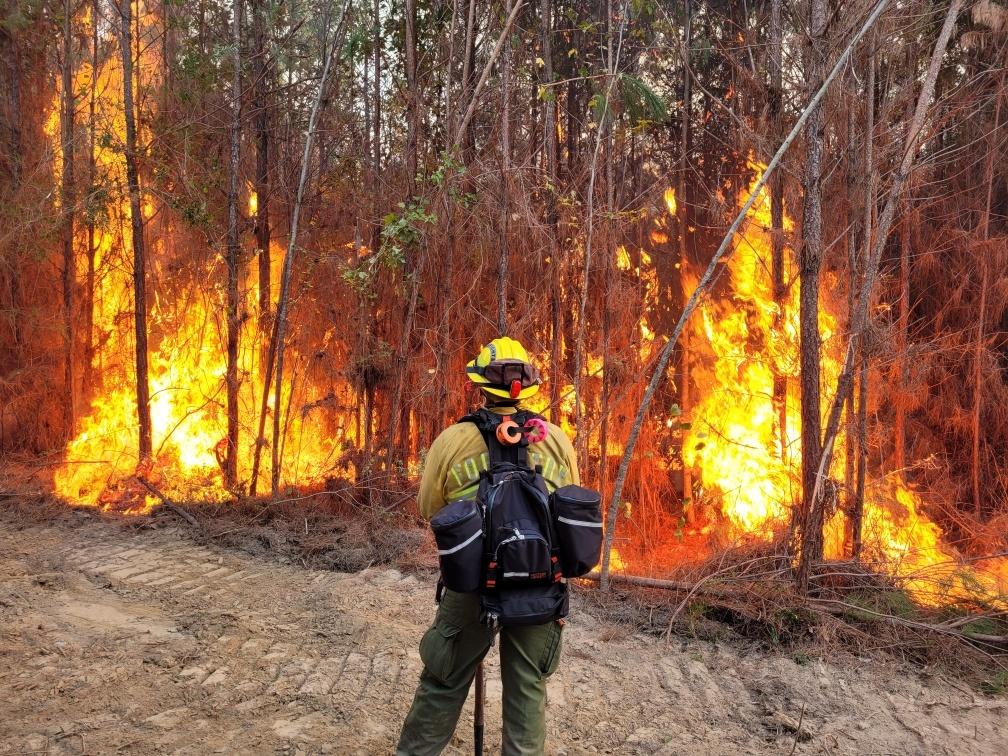“This is more extreme of a drought than I can remember,” said David Cox, lead forecaster at the Weather Service of Jackson for the past 11 years. “I don’t remember it being this dry for such a long period of time, and I don’t remember seeing soil so parched and cracked.”
In daily meetings between the National Weather Service and MFC dating back to August, forecasters began to refer to the abnormally dry conditions as a “flash drought,” defined by Cox as the rapid onset of a drought where precipitation has virtually shut off in most areas of the state.
“At least the last two to three months, we’re running 6-8 inches below average as a state, with some areas at 8-12 inches below. Some spots are only getting 5-10% of what is normal, some spots at most 25% of what’s normal. And until we get a very good soaking rain or quite a few we’re not going to see a big dent in these conditions,” Cox said.
According to NWS data, almost all of Mississippi’s 2.9 million residents are living under some level of drought conditions, with 24 of 82 counties actively under United States Department of Agriculture Drought and Disaster Designations.
That allows for farmers and other agricultural producers – especially those involved with livestock, farm-raised fish and honeybees – affected by the drought to apply for federal assistance covering losses.
“The ongoing drought in Mississippi has caused significant loss in forage availability. I’ve heard from so many livestock producers who are being forced to either suffer tremendous feed and transportation expenses, or to sell their cattle because they can’t afford to keep them,” said United States Senator Cindy Hyde-Smith, who serves on the Senate Agriculture Committee as well as the Agriculture Appropriations Subcommittee.
Aside from responding to wildland fires, Mississippi’s Forestry Commission also manages nearly 500,000 acres of state-owned forest, the majority of which is owned by 16 school boards across Mississippi who receive funding from revenue generated by timber sales. Bozeman estimates the MFC generated $10 million in timber revenue for those school boards last year.
With such a large increase, and ongoing threat, of wildland fires across the state, he worries what the impact could be on state forests moving forward – including the nearly $13 billion a year timber industry.
“From a forest health perspective, what we're concerned with primarily are going to be younger stands. If you harvested your timber and replanted this past winter, we are going to have to go back and check those seedlings to see if they survived. So you have some property that may have to get replanted again because of the drought, which from a timber supply standpoint is not the issue – the issue is going to be the cost to the landowner,” said Bozeman.
“The biggest concern especially in pine stands is not necessarily the drought itself, but the drought creating stress on the trees. That, in turn, allows that tree to be more susceptible to insects and disease, and those effects from the drought won't be known for a while,” he said.
When under such a drought, pine stands are especially vulnerable to the Southern Pine Beetle, whose presence in a stand of trees may not show up for some time and is often described as the most destructive forest pest in the South.
“The effects of this drought in mature stands might not show its true impact for multiple years. Trees are very resilient and so the damage caused today may not actually show up in a given stand for several years. So we'll just have to watch them and see,” said Bozeman.




